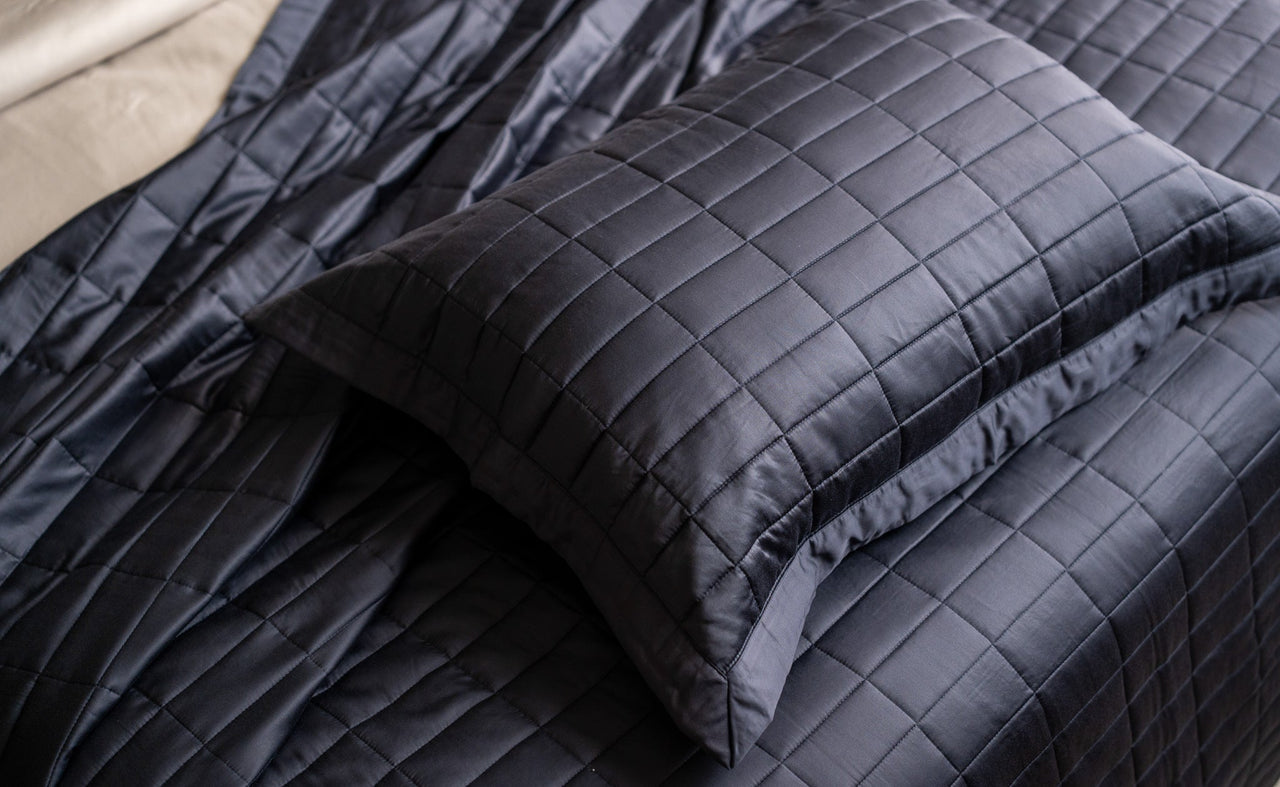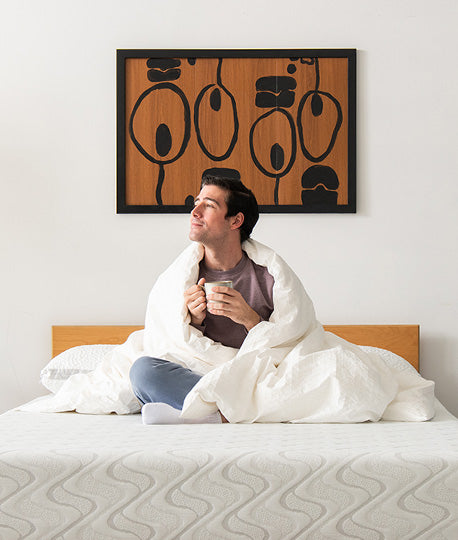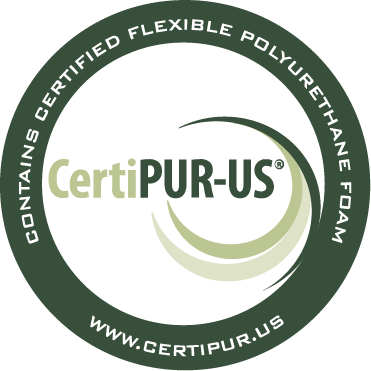Sustainable Bedding: A Complete Guide to Eco-Friendly Sleep

Making your bedroom more environmentally friendly starts with choosing the right bedding. The textiles industry accounts for 10% of global carbon emissions, with conventional cotton farming using about 16% of the world's insecticides. Switching to sustainable bedding options can reduce your environmental impact while creating a healthier sleep environment. The right sustainable bedding choices not only protect our planet but also provide superior comfort and durability compared to conventional alternatives.
Let's examine what makes bedding truly sustainable and how to select the best options for your home.
Understanding Sustainable Bedding Materials
The foundation of sustainable bedding lies in the materials used to create it. Each material offers unique benefits for both the environment and sleep quality. When shopping for bedding with us, you'll find several eco-friendly options combining sustainability with comfort.
Organic Cotton
Organic cotton stands as one of the most popular sustainable bedding materials. Unlike conventional cotton, organic cotton grows without synthetic pesticides or harmful chemicals. The Organic Trade Association reports that organic cotton farming uses 62% less energy and 88% less water than conventional methods.
Organic cotton bedding provides excellent breathability and becomes softer with each wash. It's naturally hypoallergenic and ideal for sensitive skin. When selecting organic cotton bedding, look for sustainability certifications, which ensure the highest environmental and social standards throughout production.
Bamboo-Derived Fabrics
Bamboo has gained popularity in sustainable bedding for good reasons. This fast-growing plant requires minimal water and no pesticides to thrive. Bamboo can grow up to 3 feet in 24 hours and reaches maturity in 3-5 years, compared to the 15-20 years needed for most trees.
Bamboo bedding offers natural temperature regulation properties, wicking moisture away from your body while you sleep. It's also naturally antimicrobial, making it resistant to dust mites and other allergens. The resulting fabric feels silky smooth and maintains its quality through multiple washes.
Tencel/Lyocell
Tencel, also known as Lyocell, represents a new generation of sustainable fabrics. Made from wood pulp cellulose, Tencel production occurs in a closed-loop system that reuses 99% of water and solvents. This process earned recognition from the European Union for its environmental responsibility.
Tencel bedding provides exceptional moisture management, absorbing 50% more moisture than cotton while maintaining a dry feel. Its smooth fiber surface reduces bacterial growth and offers superior comfort for sensitive skin.
Certifications and Standards
When shopping for sustainable bedding, certain certifications help verify environmental claims and ensure quality standards.
OEKO-TEX Standard 100
This certification tests for harmful substances in textiles at all processing stages. Products with this certification have been tested for hundreds of regulated and non-regulated substances that could be harmful to human health.
Fair Trade Certification
Fair Trade certification ensures fair wages and safe working conditions for workers involved in production. It also promotes environmental sustainability through restrictions on harmful chemicals and proper waste management.
Health Benefits of Sustainable Bedding
Choosing sustainable bedding offers significant health advantages beyond environmental benefits.
Chemical-Free Sleep Environment
Conventional bedding often contains chemical treatments for wrinkle resistance, flame retardancy, and other properties. These chemicals can off-gas over time, potentially causing respiratory issues or skin irritation. Sustainable bedding eliminates these concerns by using natural materials and processes.
Temperature Regulation
Natural fibers like organic cotton and bamboo provide superior temperature regulation compared to synthetic materials. A study by the University of Davis found that natural fibers can adjust to body temperature changes up to 30% faster than synthetic alternatives.
Allergy Prevention
Sustainable bedding materials naturally resist dust mites, mold, and mildew. The hypoallergenic properties of materials like organic cotton and bamboo help reduce allergic reactions and respiratory issues during sleep.
Care and Maintenance
Proper care extends the life of sustainable bedding while maintaining its eco-friendly benefits.
Washing Instructions
Most sustainable bedding requires gentle washing in cold or warm water with mild, eco-friendly detergents. Avoid harsh chemicals and fabric softeners, which can damage natural fibers and reduce their beneficial properties.
Drying Recommendations
Line-drying represents the most environmentally friendly option for drying sustainable bedding. If using a dryer, choose low heat settings to protect the fibers and reduce energy consumption.
At Nest, we offer non-toxic laundry care products, including laundry detergent and wool dryer balls, that are good for the environment and your bedding.
Storage Tips
Store sustainable bedding in cool, dry places away from direct sunlight. Use breathable cotton storage bags rather than plastic containers to prevent moisture buildup and maintain fabric quality.
Cost Considerations and Value
While sustainable bedding often carries a higher initial price tag, its long-term value justifies the investment.
Initial Investment vs. Long-Term Savings
High-quality sustainable bedding typically lasts 2-3 times longer than conventional alternatives. The Natural Resources Defense Council reports that organic cotton products can maintain their quality for up to 5 years with proper care.
Environmental Cost Benefits
The reduced environmental impact of sustainable bedding creates significant cost savings for society. The Sustainable Apparel Coalition estimates that switching to sustainable textile production could save over $500 billion in environmental costs annually.
Where to Find Quality Sustainable Bedding
Several retailers specialize in sustainable bedding options, offering various choices for eco-conscious consumers.
Nest Bedding Options
At Nest Bedding, we provide a comprehensive selection of sustainable bedding products, including organic cotton sheets, bamboo-derived fabrics, and natural latex pillows. Our products come with detailed information about materials and manufacturing processes.
Other Reliable Sources
Look for retailers that prioritize transparency about their sourcing and manufacturing processes. Many companies now offer detailed information about their sustainability practices and certifications online.
Making the Switch to Sustainable Bedding
Transitioning to sustainable bedding doesn't require replacing everything at once. Start with essential items like sheets and pillowcases, then gradually replace other bedding components as needed.
Creating a Sustainable Bedroom
Begin by assessing your current bedding needs and identifying which items to replace first. Consider factors like seasonal requirements and personal preferences when selecting sustainable alternatives.
Building a Complete Set
Start with high-quality sheets and pillowcases, then add sustainable duvet covers, blankets, and decorative elements over time. This approach helps manage costs while creating a fully sustainable sleep environment.
Conclusion
Sustainable bedding represents a significant step toward environmental responsibility and better sleep quality. By choosing certified organic materials, understanding proper care techniques, and investing in quality products from retailers like Nest Bedding, you can create a healthier sleep environment while supporting environmental conservation.
Start your sustainable bedding journey by replacing one item at a time, focusing on quality and certification standards to ensure the best value for your investment. The benefits to both personal health and environmental protection make sustainable bedding a worthwhile choice for any conscious consumer.




